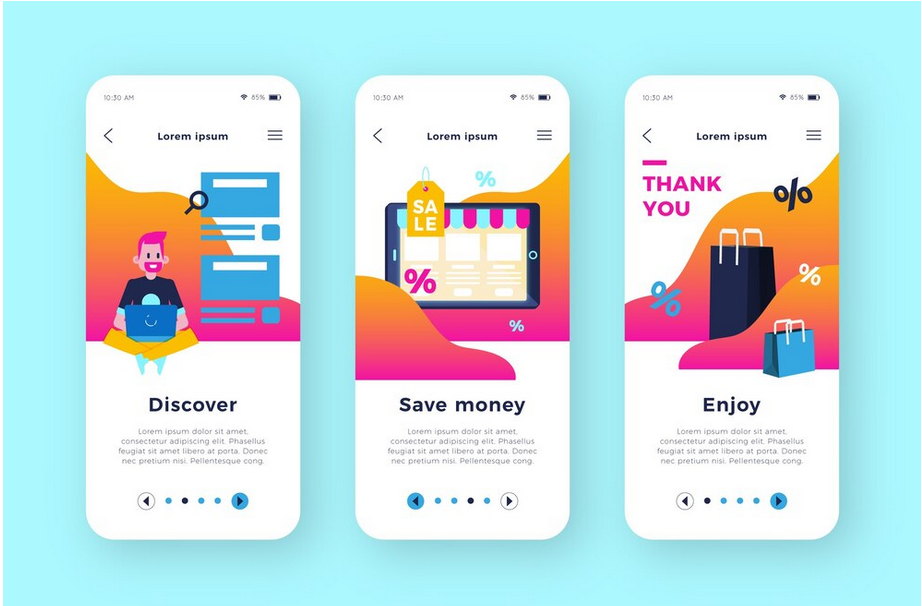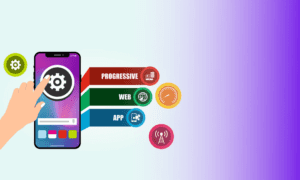The Role Of UI/UX Design In Enhancing E-commerce Conversions
(Image Inspiration https://miro.medium.com/v2/resize:fit:1400/format:webp/0*eioMWRXgK_PqgTT1)
Primary Keyword: UI/UX Design for E-commerce
Meta Description: Understand how UI/UX design for e-commerce can help boost conversions and sales.
In the fast-paced and ever-evolving world of e-commerce, customer attention is fleeting and competition is fierce.
Therefore, it is not surprising that UI/UX design for e-commerce has become more critical than ever. Not only does a well-designed online store look good, but it also works hard to convert visitors into customers.
Whether you are running a sprawling marketplace, or a small online boutique, understanding the role UI/UX design plays in improving conversions is key to your success.
Let’s check out how user-centric design strategies can come in handy for boosting your e-commerce conversions and why focusing on e-commerce user experience is vital in today’s digital landscape.
-
The Power of Visual Appeal – First Impressions Matter
When you walk into a brick-and-mortar store, the lighting, layout and the overall atmosphere immediately influences your perception.
The same principle is applicable when you check out online stores. The visual appeal of your website is the first thing visitors notice and it can make or break their shopping experience.
Why Is It Important?
An aesthetically pleasing design will help draw in users and they will feel comfortable exploring your website.
However, it is not just about looking good – the UI/UX design for e-commerce also needs to be intuitive and functional.
If users find your website easy to navigate and attractive, they are more likely to stick around, check out products and make a purchase.
-
User-Centric Design Strategies – Putting The Customer First
A deep understanding of your customers is at the heart of successful UI/UX design for e-commerce. It is best to opt for design strategies that focus on your users.
It is because they prioritize the preferences, needs and behaviors of your target audience. This ensures that every aspect of your website can enhance their experience.
Why Is It Important?
When you design your website with the user in mind, it becomes easier for customers to find what they are looking for. They will trust your brand and also complete their purchase.
Not only can you improve user experience with this approach, but also build customer loyalty. Over time, you will be able to see higher conversion rates.
-
Simplicity And Functionality – Streamline The Shopping Experience
A cluttered and confusing website is a surefire way of driving away potential customers. Simplicity and functionality are at the core of effective UI design principles for online stores.
The easier it is for visitors to navigate your website, find the products they are looking for and complete their purchase, the more likely they are to convert.
Why Is It Important?
Since you can minimize friction with a streamlined shopping experience, it reduces the chances of your customers abandoning their carts.
When you remove unnecessary distractions and steps, it becomes easier for customers to quickly and effortlessly complete their purchase.
-
Improving Conversions with UX – The Role Of Navigation
The backbone of every e-commerce website is good navigation. If users cannot find what they are looking for easily and quickly, there is a good chance they will leave and look elsewhere.
With effective navigation, you can enhance the e-commerce user experience, thereby improving conversions.
Why Is It Important?
With intuitive navigation, users can browse your website with ease. It leads them to the products they are interested in and encourages them to explore more.
When users are able to navigate your website easily, they can find the products they wish to buy and this increases the likelihood of conversions.
-
Mobile Optimization – Connect With Customers On The Go
Mobile shopping has become more popular than ever in 2024. Since more users are browsing and purchasing products on their smartphones, UI/UX design for e-commerce should prioritize mobile optimization.
It is no longer optional to have a user-friendly and fully responsive website for mobile devices – it is now essential.
Why Is It Important?
You can deliver a seamless user experience to your users with a mobile-optimized website, regardless of the device they are using.
When you have a website that you can navigate easily on a smartphone, users are more likely to stay engaged, check out products and make purchases.
Mobile optimization can play a key role in improving conversions with UX for e-commerce businesses.
-
Building Trust – The Importance of Credibility
The success of an e-commerce website depends on trust. Users should feel confident about the security of their information. They should also believe they are purchasing from a reputable source.
UI/UX design for e-commerce plays a vital role in developing trust and establishing credibility.
Why Is It Important?
Trust signals, such as clear return policies, secure payment options and customer reviews, reassure users that they are making a reliable and safe purchase.
A website that looks trustworthy and professional is more likely to convert visitors into customers.
-
Personalization – Creating A Tailored Shopping Experience
One of the most effective user-centric design strategies is none other than personalization. After all, it helps enhance the e-commerce user experience.
When you tailor shopping experiences to individual users, you can boost engagement and drive more conversions.
Why Is It Important?
Personalized experiences make your users feel more understood and valued. This leads to higher customer satisfaction and loyalty.
When users see offers and products relevant to their interests, they are more likely to make a purchase.
-
Testing And Optimization – Making Continuous Improvements
The world of e-commerce is undergoing change. So, what works today may not work tomorrow. Thus, regular testing and optimization are a must for improving conversions.
Analyze user behavior continuously and make data-driven adjustments to your UI/UX design. This will ensure that your website remains user-friendly and effective.
Why Is It Important?
You can identify various areas of your website that require improvement via user feedback, heatmap and A/B testing.
When you test different design elements and make optimizations based on the results, you can refine your website to meet user needs in a better way.
At the end of the day, it can lead to increased conversions. For instance, you can test different product page layouts to see which results in more conversions.
It allows you to create a more effective design that encourages users to complete their purchases.
-
The Future of UI/UX Design For E-commerce
In the constantly changing landscape of e-commerce, it is crucial to stay ahead of the curve with UI/UX design for e-commerce.
When you focus on mobile optimization, user-centric design strategies and continuous improvement, you can create a website that not only looks great, but also converts visitors into loyal customers.
As you navigate the digital marketplace, you should not forget that every design decision can potentially impact your bottom line.
So, whether you are optimizing an existing online store, or launching a new one, prioritize UI/UX design and watch your conversions soar!






